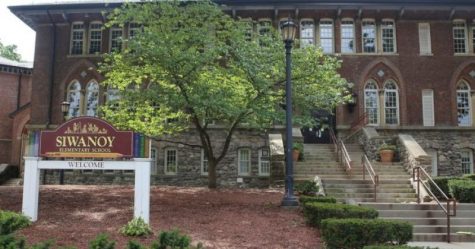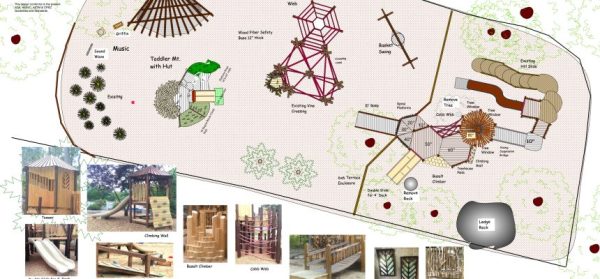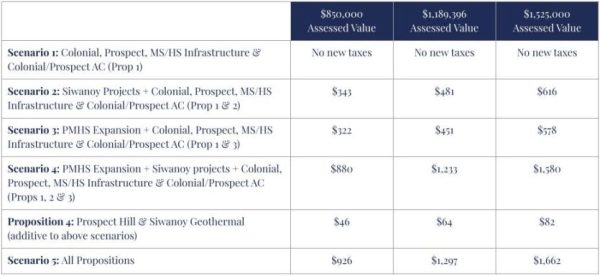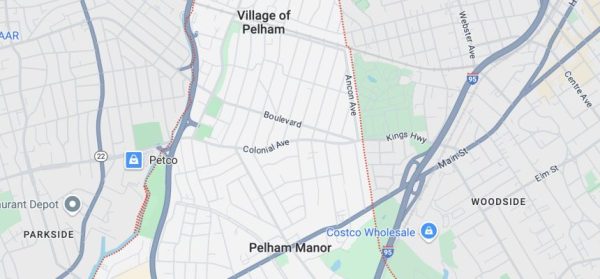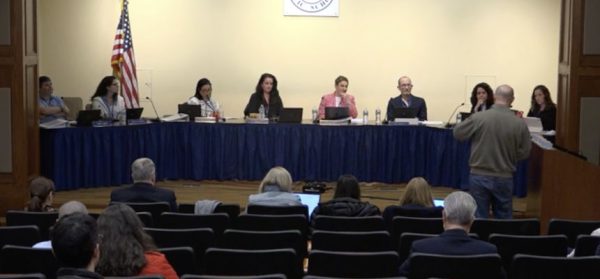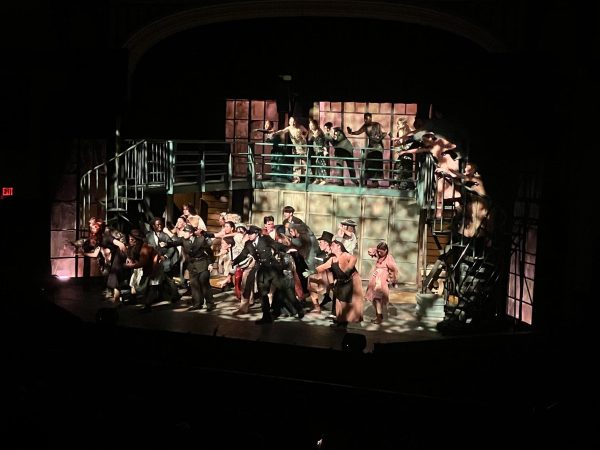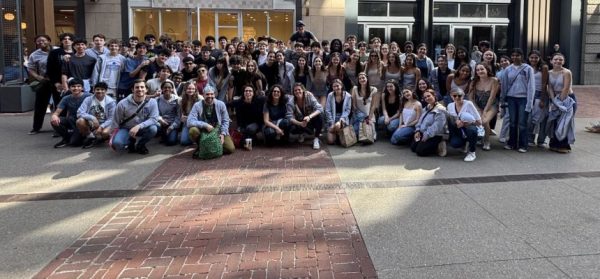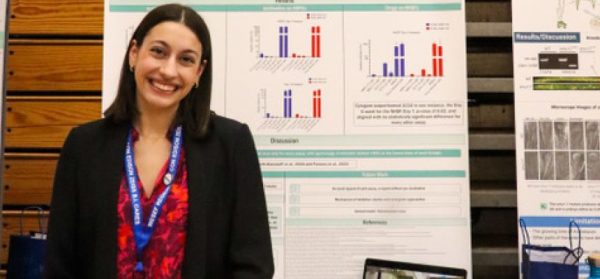School board hears presentations on authentic learning
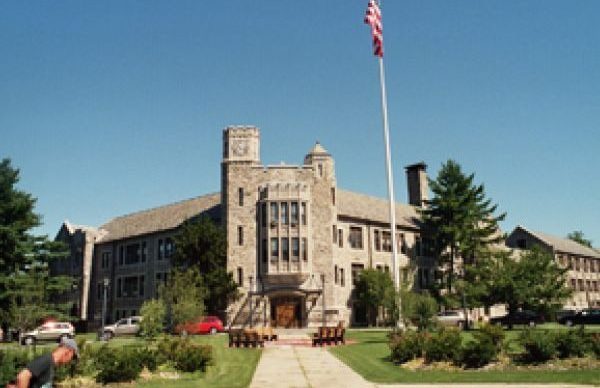
The Pelham Board of Education discussed Tuesday the district’s authentic learning initiative. The plan was to to clearly define what authentic learning is, how it affects students, outline the goals of the initiative and to hear from teachers how their classes incorporate authentic learning.
Authentic learning is defined as situations where students participate in an experience that addresses real-world problems and mimics the work of professionals; involves presentation of findings to audiences beyond the classroom; requires open-ended inquiry, thinking skills; and allows students to engage in discourse and social learning in a community of learners in which they direct their own learning.
Steven Garcia, assistant superintendent for curriculum, instruction and personnel, defined the mechanics of the initiative, which marries the effective use of learning spaces and students’ time in order to encourage more of students’ passions and interests. This effort is designed assist students in the broadening of their horizons for the future as better and more dynamic learners.
Garcia further explained how the key of authentic learning is to balance important data with interesting information which students find relevant to themselves and to their lives.
From the elementary schools, Alicia Gallagher from Hutchinson and Adele Reynolds from Siwanoy spoke about their approaches to authentic learning with Science 21 and the Make-A-Change project. The Science 21 program allows Kindergarten through third graders to address and solve real-life problems, focusing on life science, earth science, physical science, and engineering.
The fifth grade Make-A-Change (MAC) project allows students to become activists in their own communities, solving problems from their own lives, after doing research about a specific activist previously in the year. Some of the changes which have resulted from the MAC project include the addition of backboards to basketball hoops at Siwanoy to prevent balls from going onto the roads, mirrors and urinal dividers added to bathrooms, classrooms repainted, and more Chromebooks made available to be used as a learning resource. The students write their own project proposals, research their topics in-depth, conduct interviews relating to the costs and time of their projects, work extensively in teams, and learn how to divide a workload before presenting their proposals.
Middle school English teacher Sara Pinkster presented on the eighth grade Community Project project which highlights continuous learning and the use of International Baccalaureate rubrics. The project runs from November to June, and is incorporated into every unit of study throughout the year. The students work in groups, addressing real-world problems, perform research on their topics, engage in authentic writing in order to communicate with professionals in their field of study. The students present their findings to both their peers at the end of the project and to the larger Pelham community. Inthe past, students have engaged in a wide range of fundraising activities in order to finance their ideas, from clothing and equipment drives to selling goods outside of DeCicco’s.
Megan Rice presented on her human rights course, a semester-long elective available to all high school students. The course is founded on the United Nations’ Universal Declaration of Human Rights, and the content which each class will focus on is chosen by the students based on current events. Students complete many projects and presentations throughout the semester, including letter-writing campaigns and applying for mock grants. Students hear from guest speakers and are exposed to the benefits of social media platforms as engines of change. Each student finishes the course with a project on the human rights issue of their choice.
Greg Kopstein spoke about his sociology class, another semester-long high school elective. The course is centered around the month-long final project, which fast-forwards students to after college, and forces them to handle the real world. Studentsp for job interviews in the field of their choice and are interviewed by staff members who have experience in the same field. Students also handle personal finances, looking at the costs of mortgages, taxes, utilities, transportation, and raising a child. Kopstein explained how each year that the project runs is, to him, a ‘generation’ of the project. “Every previous generation changes the nature of the project and adds components to it,” allowing the project to effectively evolve with the ideas and interests of the students in the course.
Jason Lindely and Joe DiBello, Physics 1 teachers in the high school, explained how their courses exemplify authentic learning through more projects and fewer standard exams. Pelham physics students no longer take the state-mandated Regents exam, instead they finish with a final project. Each group of students designs and builds a car with a breaking mechanism, so that the car stops before hitting a barrier in order to keep the egg on the front of the car intact. This final project spans every unit of study that the students have been tested on throughout the year, but in a much more tangible and interactive manner. At the end of the project students complete reflections on their projects and their processes.
Irene Gruber, the A.P. Forensics teacher in the high school, explained how her whole curriculum is reflected in the idea of authentic learning, due to the hands-on and investigatory nature of the course. Students perform blood splatter analysis in order to reconstruct a narrative for a muder using only photos of a crime scene. They then review their deductions as a class before creating their own crime scenes for other groups to solve. The course ends with “The Dig”, in which students excavate fake corpses, planted by Gruber, and deduce how the victim died.
James Rogers’ A.P. Computer Science students investigate how computers work and communicate and how applications take and use data, as well as more advanced computer programs and coding. The course is grounded in student collaboration and open-ended projects in which students explore areas of study of their choice. Students frequently submit ‘checks’ to Rogers, which are graded and can be edited and resubmitted for full credit if necessary. This year is Rogers’ first teaching the course, and he said that he learns right alongside his students.
Lastly, Tom Callahan, the director of math and science for the high school, presented to the board on the science research program. Science research is a cumulative course which the majority of students who take it enroll in for all four years of high school. Students develop a niche area of study which they research and develop throughout their time in high school. They are required to secure an internship which they attend during the summer, in a lab or other area of scientific research. The program is centered around students finding and solving problems which they are passionate about, and similarly to Lindley and DiBello’s classes, coping with failure and discovering alternate pathways to success.
These courses, which focus on performance-based experiences instead of exams, provide a more holistic educational experience for all types of learners.
The board will begin to meet on Wednesdays instead of Tuesdays starting in December. The board’s next meeting is October 15.
Aside from her work at the Examiner, she competes in the high jump for the track and field team as a team captain. In her free time she enjoys hiking,...



